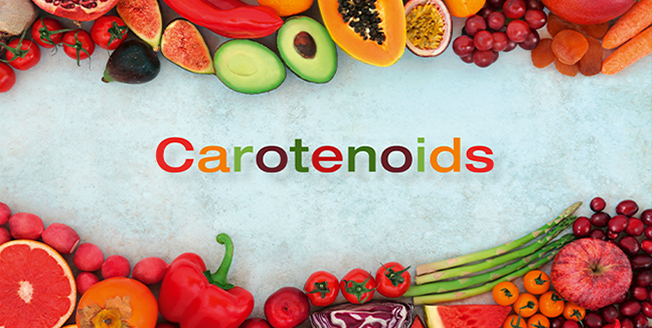
Carotenoids tend to form geometric isomers, so they can occur as all-trans (all-E) or as cis (Z) isomers. They arise, for example, from the effects of light or heat on vegetables and fruits or their extracts. They also occur naturally or are formed in the human body. Due to the different shape of the Z isomers (kinked shape instead of linear and rigid), the isomers can differ drastically in their properties such as solubilisation or adsorption as well as transport in the human body. Lycopene, for example, occurs predominantly in foods as the all-E isomer, while in the human body it predominantly occurs as the Z isomer. This means that the lycopene is either immediately isomerised by the human body or the all-E form is poorly absorbed.
Therefore, appropriate analytical methods for detailed profiling of carotenoid isomers in nutritional studies are of great importance. This application note demonstrates the separation of up to 48 carotenoids by detection at different wavelengths (285, 347 and 450nm) [1]. Standards of lutein, zeaxanthin, β-cryptoxanthin, α-carotene, β-carotene, lycopene, phytoene and phytofluene dissolved in ethanol were heated at 80°C for 30min to achieve stereomutation. A mixture of these extracts was used to optimise the separation.





